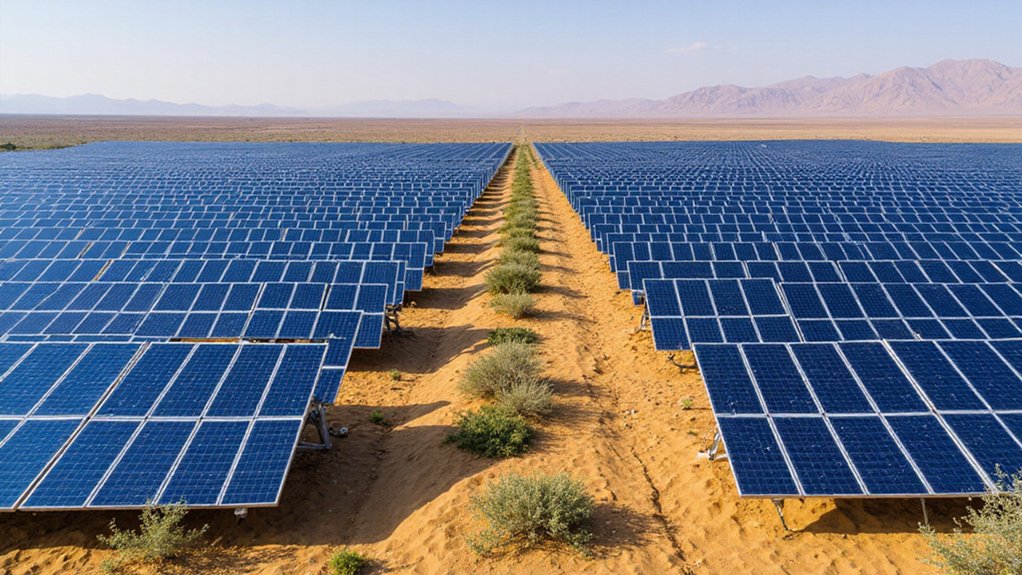While most deserts remain barren wastelands of scorching heat and lifeless terrain, China’s Talatan Desert tells a different story. The Qinghai Gonghe Photovoltaic Park, a one-gigawatt solar installation, has taken over vast stretches of what was once useless land. And guess what? It’s actually making the desert bloom. Not just generating clean energy—it’s literally bringing life back to dead soil.
Scientists aren’t just making wild claims here. They’ve got the receipts. Using the DPSIR model and studying 57 environmental indicators, researchers from Xi’an University of Technology found ecological health scores inside the solar park hit 0.4393 (“general”)—significantly higher than the surrounding areas‘ pitiful 0.2858 (“poor”). That’s right. The place with all the technology is healthier than the “natural” desert. Who would’ve thought?
Hard data confirms: solar parks turn “poor” desert ecosystems into thriving habitats through science, not wishful thinking.
The panels create shade, which means less evaporation and more moisture in the soil. Plants grow better. Microbes flourish. The harsh temperature swings of desert life moderate. It’s like the solar farm is a massive umbrella for a struggling ecosystem. And it’s working.
This isn’t just tree-hugging environmentalism—it’s practical climate action. The research demonstrates that solar installations can foster ecological restoration while producing renewable energy. The improved soil quality has led to better moisture retention and increased plant diversity beneath the panels. While Republicans busy themselves denying climate science, China’s turning worthless land into both an energy powerhouse and a carbon sink. The panels generate clean electricity, and the newly thriving plants sequester carbon. This approach achieves a minimal land use compared to other renewable energy options while still delivering substantial power output. Two birds, one stone.
Local communities benefit too. Jobs in construction, maintenance, and operations. Less severe dust storms. A healthier environment. All from what conservatives would dismiss as “wasteful green spending.”
The Talatan project proves renewable energy isn’t just about replacing fossil fuels—it’s about reimagining our relationship with land. One of the world’s largest desert solar farms is showing us the future: technology and nature working together, not against each other. Turns out we can have our clean energy cake and eat it too.
References
- https://glassalmanac.com/china-confirms-covering-deserts-with-solar-panels-permanently-alters-the-ecosystem/
- https://farmingdale-observer.com/2025/01/05/china-confirms-desert-solar-panels-permanently-alter-ecosystems-environmental-impact-revealed/
- https://www.pv-magazine.com/2024/10/10/large-scale-pv-has-positive-environmental-effect-on-desert-areas/
- https://digitalpower.huawei.com/en/fusionsolar/success_stories/detail/140.html
- https://thinkstewartville.com/2025/05/10/china-has-covered-a-desert-with-solar-panels-and-confirmed-it-could-change-the-ecosystem-forever-2/








